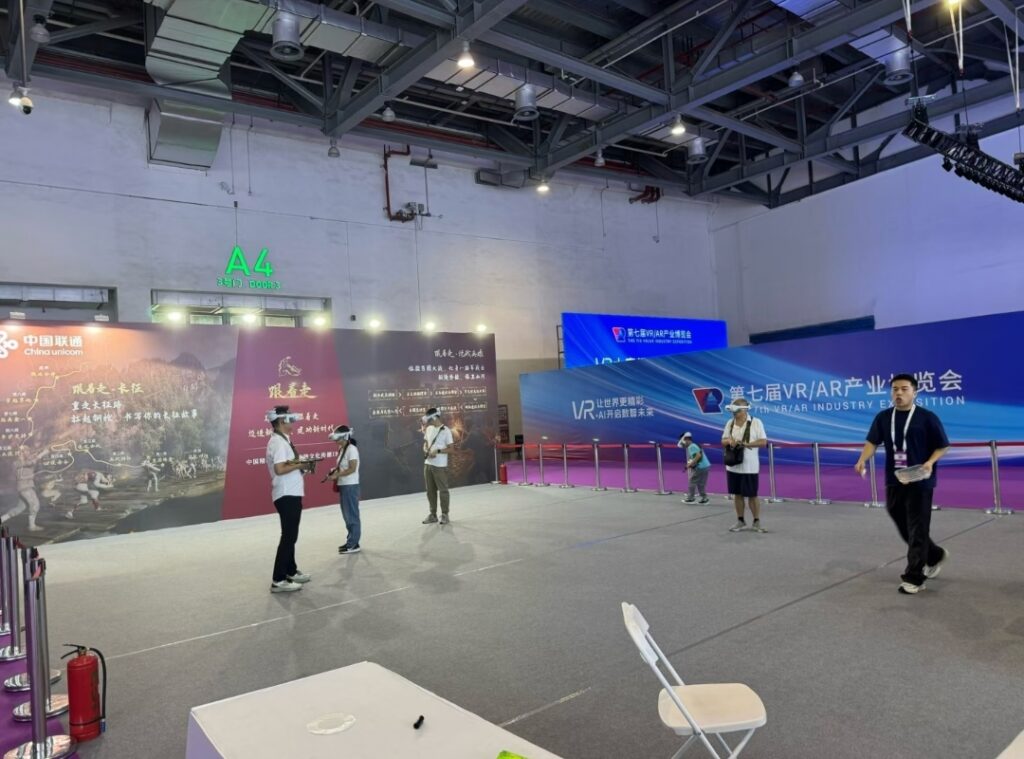Currently, VR technology is shifting from a mere decorative display tool to an essential productivity driver across industries like industry, healthcare, education, and cultural tourism.
The 2025 World VR Industry Conference concluded in Nanchang, Jiangxi on October 20th. With the theme “VR Makes the World More Wonderful – VR + AI Unleashes the Digital and Intelligent Future”, it focused on release, discussion, connection, and experience, hosting various events. An industry insider noted, “The future is here. In this virtual-real era, human imagination may be the only limit.“The deep integration of AI and VR is reshaping the industrial landscape as a new force for digital and real economy transformation.

A Host of “Hardcore” Technologies Shine
At the conference, AI glasses with real-time translation, embodied intelligent robots as AI etiquette, and 24/7 large-model intelligent customer service blurred the line between “virtual” and “real”.
Latest virtual reality products and tech were on show. As OLED and Micro OLED mature, VR headset resolution soars, making images clearer. At BOE’s booth, a Real Pixel FastLCD product with the world’s highest PPI wowed attendees with ultra-clear visuals, solving VR’s screen-door effect and set to mass-produce.
Tracking tech in VR also advanced. Eye and gesture tracking, plus AI-based intelligent tracking, boost interaction naturalness and immersion.
In iFLYTEK’s area, the “Alpha Egg” Go robot, now priced at 4,999 yuan (down from over 100,000 yuan via hardware-software innovation), drew many fans with its teaching and playing capabilities.
China has become a key global VR market, progressing in hardware, content, and applications. Terminal tech like chips and AR glasses thrive. Domestic content tools and generative AI enhance content supply. Industry applications like simulation training scale up.
AI + VR: A New Digital Future
AI (computing tech) and VR (interaction tech) integration spurs new scenarios. Li Liang, from Nanchang Xiahetao Tech, said, “AI-VR integration boosts VR applications, providing strong tech support.”
AI’s deep learning makes VR content creation more efficient and interaction natural, while VR’s immersion offers AI a realistic carrier. “AI + VR” reshapes entertainment, education, etc., and opens new tracks in industrial Internet and digital twins. Firms explore integrated development.
China Mobile turns cultural heritage like the Potala Palace into global immersive content via AI. With Jiangxi, it created “Jiangkou Meicun Misty Rain Metaverse”, reviving traditional culture.
Experts say future “AI + VR” needs key tech breakthroughs, scenario implementation (industrial twins, medical training, etc.), and ecosystem building (patent pools, standards, talent, international cooperation).
China’s VR/AR/XR industry still faces bottlenecks: high dependence on foreign core components (like high-end chips) and insufficient cross-domain coordination (hardware-content adaptation, industry standardization).
Hu Chunmin suggests solving these by boosting R & D, building innovation platforms with “chain master” firms, promoting scenario-based apps (digital,telemedicine), and enhancing global cooperation in standards and IP to build an open-win ecosystem.
